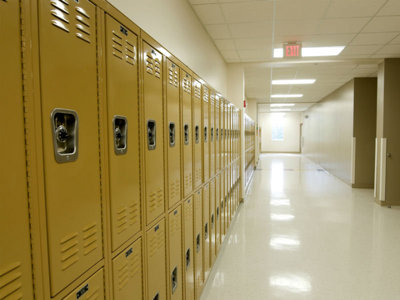Last weekend’s Alan Borsuk column in the Milwaukee Journal Sentinel focused on a new Wisconsin state law that directs University of Wisconsin system schools to report a new set of data to the legislature and the state Department of Public Instruction. This is about remedial college classes, how many students are taking them and which high schools these students graduated from.
In other words, UW schools will use the data they collect anyway – what percentage of their incoming students need remedial help in math and English – to provide concrete numbers for something many of us understand in the abstract: A lot of students today get to college unprepared for the rigors of academic life.
If you asked around, I bet you’d find your friends and neighbors are likely to believe this is recent, that K-12 schools used to be better than they are today. This is the national trend, people insisting that today’s students aren’t getting as good an education as a generation or two ago despite the hard evidence otherwise. It’s not hard to find old complaints from college professors going back to the 19th century saying every year’s incoming class is less prepared than the last. The kids these days!
But remedial classes at UW are not, in fact, a new phenomenon and not the result of some recent dumbing-down of high school curricula or the inevitable decline of academic quality in public schools.
Borsuk cites UW system data showing that 20 percent of incoming students in 1990 took math remediation classes, about the same percentage as today, though it has been up and down in between. Though Borsuk doesn’t say it, the percentage of students needing English remediation in 1990 was a bit over 10 percent – higher than the “a bit under 10 percent” he cites for today. And, depending on who you ask (there are different groups out there tallying the stats), UW’s remedial percentages are either in line with national averages or somewhat lower.
The UW system actually started its path toward offering remediation, according to a 2013 report, in the 1970s, when professors raised concerns about the quality of incoming students. A task force was created that recommended the remedial courses – although the bureaucratic molasses meant remedial courses didn’t actually start until 1990.
We also have known for some time where in the UW system these students are going. Borsuk writes, “The 2013 report showed the remedial rate at UW-Madison was less than 1 percent. For UW-Milwaukee, it was almost 37 percent and for UW-Parkside, it was over 65 percent.” It’s true, for a number of years running Madison has had no or almost no enrolling students needing remedial English at all. Second- and third-tier UW campuses get the applicants who struggle in high school, not the system’s flagship.
The new information in future years will be some pinpoint data on where the remedial students are coming from (assuming it was a public school; private schools are excluded from being named by UW’s reporting under this law, natch). UW’s 2013 report didn’t break down the demographic stats of these students quite as well as this 2009 report I found. The earlier report showed clearly that the students most in need are Pell Grant recipients (low-income), African Americans and students with low ACT scores (Milwaukee’s ACT average is around 16). In other words, my students.
So why do so many students who come from my and my colleagues classrooms in Milwaukee Public Schools require remediation? I’ll offer three reasons.
First, not everyone who goes to college should go to college. I want all of my students to graduate high school able to go to college if they want to, but we have in this country made college attendance the default, requiring college degrees for jobs that use none of that college knowledge. College degrees have become a symbolic marker to employers; they would rather know that you can stick out a four-year degree rather than if you have a particular skill set required by the job.
MPS and the legislature can’t fix this, as the problem is much larger than this city or this state. And it goes against the grain of what I and much of the rest of the district believes, that there’s a benefit of going through the application and admission process and going through the rigors of university life. Though I know many of my students would be better suited by a two-year degree or other post-high school training program, I want to see them apply to a real college because it’s a good experience for them.
Second, a D is still passing. MPS hasn’t released recent data that I’ve found, but before the state report card system, the district put out its own report cards. These always showed that the mean grade point average for high school students was around 1.0. D students can pass classes, accumulate credits and graduate just fine while remaining demonstrably below average.
The state – thankfully – does not have a high-stakes graduation exam that students must pass before earning their diplomas, or for that matter any other specific set of standards that must be met before the end of high school. The exception is the mandatory civics test that goes into effect this coming school year, but that is hardly going to be a barrier to graduation the way it’s written into law. In any case, it wouldn’t tell us a thing about whether students will need math or English remediation in college.
Without such standards, schools are able to send below average, D students on into their adult lives. Which is good for those of us who would rather not be teaching 40-year-old high school students who never passed English 10, but bad for universities who enroll them into their programs.
Like with the first point, there’s no good way MPS or the UW system can solve this one, and any ways that the legislature could try to solve it, like making a new high-stakes test, will only make other problems worse.
But my third and final point is one that can be somewhat solved: Schools are under intense pressure to graduate students in just four years. In Wisconsin, the four-year graduation rate counts for more than a quarter of a high school’s total score on the school report card, more than either students’ math or reading test scores separately and more than any indicator that schools are making progress closing achievement gaps or reducing the dropout rate.
Like the UW system and its incoming freshmen, Milwaukee high schools (and schools in many other districts, too) find that their incoming students are not performing at grade level. On the most recent school report cards, fewer than 18 percent of MPS eighth graders tested proficient in math and fewer than 16 percent in reading (state eighth-grade averages were about 46 percent and 34 percent, respectively, for comparison).
To expect schools to graduate in just four years students who are already several years behind is simply unrealistic. Yet high schools and school districts get no credit on their school report cards for putting remedial students onto a five- or six-year plan, or helping them to a GED, even though that is a more humane and reasonable course for students who start ninth grade far behind their peers.
This is in large part the fault of the U.S. Department of Education, which implemented something called the “four-year adjusted cohort graduation rate” across all 50 states a few years back to try to bring some uniformity to how states calculate graduation rates. The regulation defining this rate specifically and explicitly states that students held back a grade by their high schools or get a GED count against this graduation rate. Schools that try to do the right thing by waiting to graduate students until they’re ready or help them find alternatives to graduation get penalized.
Though the definition of this graduation rate comes from the feds and can’t be changed by the state, the state can choose to make it less important when it calculates school report card grades. The feds do require the rate to factor into report cards “to a significant degree” but does not mandate a particular number or weight. Graduation rate does not need to count for so much of a school’s overall grade, and changing that weight would give schools some freedom to identify students who need extra time and give them that time.
In addition, schools ought to be given some kind of credit against the initial scores of their “four-year adjusted cohort graduation rate.” A lower four-year graduation rate should be expected in schools where students start two or three or four years behind. This is not to say that schools can or should be let off the hook for educating these students; rather, we should acknowledge that successful interventions will take time and effort that a strict adherence to the “four-year adjusted cohort graduation rate” will simply not allow.
Not that any of that will ever happen, because that would be good for students and their schools. If this law has the effect that almost every recent school-related initiative in this state has had, the new data about remedial classes reported by the UW system to DPI and the legislature will simply be another excuse to attack Milwaukee’s public schools, which doesn’t do anything for our students, their high schools or the universities that will be serving them.


 i evaluate to yes even if there's no image
i evaluate to yes even if there's no image  i evaluate to yes even if there's no image
i evaluate to yes even if there's no image  i evaluate to yes even if there's no image
i evaluate to yes even if there's no image  i evaluate to yes even if there's no image
i evaluate to yes even if there's no image  i evaluate to yes even if there's no image
i evaluate to yes even if there's no image  i evaluate to yes even if there's no image
i evaluate to yes even if there's no image 